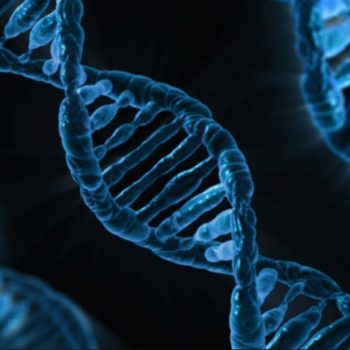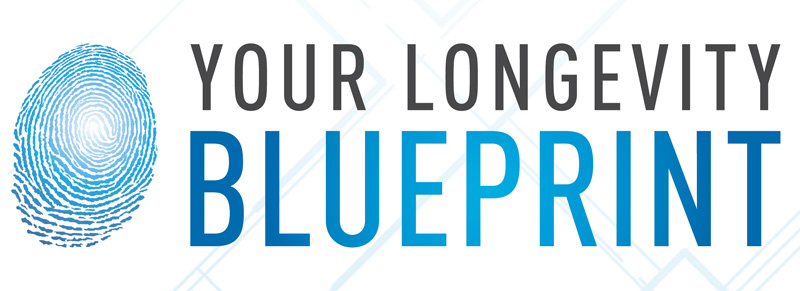

We know that environment heavily influences our genes. The saying, “Our genetics load the gun, but environment pulls the trigger” means, in part, that one’s environment can be the straw that breaks the camel’s back. For instance, you could be managing your genetic variants well at home until you travel. But… the factors of traveling— stress, sleep deprivation, radiation and electromagnetic chaos, the mold exposure in the beach house you travel to, combined with the poolside margaritas—can suddenly set off a cascade of events and you’ll start to fall apart.
Compare two of my patients with Lyme disease. I’ve seen one simply require a few months of antibiotics for them to return to normal functioning, while another struggled for decades due to the effects of oxidative stress and inflammation. Why was one path to recovery more difficult? One may have been genetically primed for better success than the other. One may have inherited a “worse” set of genetic variants. We all have genetic variants. Your goal should be to keep “bad” genes less active and “good” genes working to their full potential.
In chapter 3 of my book Your Longevity Blueprint, I compare your genes to the electrical work in your home. There’s no need to have all the lights turned on at once. When you wake up in the morning, you likely turn on the bedroom and bathroom lights, and then you may turn on the kitchen lights as you prepare breakfast. Have you ever considered the intricate process takes place in the quick second it takes to turn your lights on with the flick of the switch? Similarly, our genes fuel every enzymatic reaction and every cell in our body. A disrupted supply during power outages and blackouts can stop operations and inconvenience those affected. A power outage is never fun. Also, if you keep a light turned on too long, what happens? It burns out. That is relatively similar to what can happen with genes.
First, some Genetics 101.
DNA provides the instructions for making enzymes. Enzymes take one substance, add what are called cofactors (such as minerals, energy in the form of ATP, or B vitamins), and makes something brand new. This process takes substance A and turns it into substance B with the use of cofactors. That’s how the fats, carbs, and proteins we eat, the water we drink, the air we breathe, and the sunlight we are exposed to turns into or affects something in our body. It is an amazing process. If you use up all your cofactors, all your energy, you can’t keep your genes doing their job. Then you’ll find yourself either low in the good things you need to function, or with toxic substances that are not cleared properly and end up hurting you. Over the past few years, I’ve become more and more fascinated with how nutrition and environment influence the gene expression.
Chapter 3 may contain the most difficult concepts in my book to explain. I’ll try to make them easier to understand. Let’s start with defining some terms. Epigenetics is the study of how genetic traits can change and be passed down from generation to generation. Epigenetics often refers to changes in chromosomes that affect gene activity and expression, usually resulting from external or environmental factors. Genomics is the branch of molecular biology concerned with the structure, function, evolution, and mapping of genomes. Nutrigenomics blends nutrition and genomics. It is the scientific study of the interaction of nutrition and genes, especially with regard to the prevention or treatment of disease. Proteomics is the study of proteins. All of our body’s functions require proteins and enzymes.
As a health provider, I am most interested in nutrigenomics, because that is what we can change and alter to provide you the support you need to be as healthy as possible. Unfortunately, we can’t change the genetics you inherited, but we can teach you how to avoid environmental factors that can impact your weakened genetics, and how lifestyle and nutrition, among other things, can help you compensate for your inherited weakness. Your genome is your complete set of genetic instructions required for you to grow and develop. Your human genome is made up of 3.2 billion base pairs of DNA, twenty-two paired chromosomes, and one X chromosome—with men having one Y chromosome as well, and women having an additional X chromosome.
Deoxyribonucleic acid (DNA) is the long molecule that contains your unique genetic code. It holds the instructions for making all the proteins in your body. The four main building blocks or bases making your DNA are adenine (A), cytosine (C), guanine (G), and thymine (T). DNA is a double-stranded molecule forming a “double helix” shape, often compared to what a twisted ladder would look like. Each strand of the ladder is paired with a building block. The exact order of these blocks makes you unique. The A should always pair with T, and C with G. Single-stranded DNA coils into threadlike structures called chromosomes, which live in the nucleus (middle) of each cell. Each of our twenty-three chromosomes is read to form several small segments, our individual genes. Our cells read this DNA in groups of three bases. Each group of three forms an amino acid. Twenty different amino acids exist. Amino acids are often called the “building blocks of life.” They can combine in different ways to make proteins needed to make cells, which make up tissues, which make up organs, which make up—us. DNA tells the amino acids how to combine. When the body wants to turn an action on or off, it uses enzymes.
Enzymes are protein molecules that catalyze chemical reactions and require cofactors (often metals or vitamin derivatives). Think of enzymes as the workers in the cell. They work on a substrate. DNA is our pattern, our blueprint, that tells our cells how to make proteins, essentially telling us how to live (Miller 2015).
Everyone has their own DNA sequence.
That is why people can be identified using DNA fingerprinting. A single nucleotide polymorphism (SNP) is a “swap” at the middle portion of the gene ladder. That swap is a change; it’s irregular and not normal. SNPs are what I refer to in Chapter 3 as genetic variants. “Alleles are forms of the same gene with small differences in their sequence of DNA bases” (National Institutes of Health 2017). Think of alleles as being one or two versions of a gene that is expressed. One side of the DNA ladder comes from the mother, and the other comes from the father, so each individual inherits two alleles from each gene—one from each parent. If these two alleles are the same, the individual is said to be homozygous for that gene. If the alleles are different, they are said to be heterozygous. In other words, if you inherit two variants, or defects, you are said to be homozygous for that gene. If you inherit one, you are said to be heterozygous. This can become very confusing, as SNPs can lead to slower or faster enzyme function. SNPs make up our genetic inheritance, and can predispose one to cancer, diabetes, cardiovascular diseases, and even neurological diseases. You may have heard the term carrier, which means that you have inherited one bad copy—that you have that SNP. Some SNPs account for traits as simple as eye color, while others can impact the production of enzymes, impairing that gene function. Despite each individual human’s differences, less than 1 percent of total genes vary from person to person.
Genes are responsible for how our metabolism works, how we process medications, and even our personalities. Genes control how you clear toxins, and how you neutralize free radicals. They also tell if you are likely to develop a minor or even severe disease.
I commonly review genetic interpretation reports with my patients, combining this information with their most recent nutritional evaluation. Then I can see not only what predicted nutrients they need based on genetics, but I can also see what nutrients the patient needs on a current functional test.
For instance, just because a patient has vitamin D receptor issues doesn’t mean they need to take more vitamin D. Testing the level is more important in this case. A patient could have methylenetetrahydrofolate reductase (MTHFR) variants but might not actually need more folate, too. Patients often get hung up on this one genetic variant while there are hundreds more that should all be assessed at the same time.
In my practice, I don’t specialize in testing for disease-specific genes like a gene for Huntington’s. Instead, I look at genes that impact your ability to make antioxidants; important nutrients like B12, folate, and choline—genes that support the removal of toxic substances like ammonia and dangerous chemicals.
Want to learn more about these SNPs? In that cascade of events mentioned above, how do you prevent your bad genes from turning on? How do you not fall apart? This is where nutrigenomics is soooooo important.
Check out my next few blogs where I dive in deeper!
